Class 4 Science - How Do Plants Make Their Food - CBSE Worksheets Solutions - 1
Q1: Give two examples of the following.
(i) Roots with stored food ______________ ______________
Ans: Carrots, Radish
Roots attach the plant body to the ground. It provides support to the plant and helps in holding the plant firmly in the ground. The root hairs of the plant absorb water and minerals from the soil and pass it to the stem. Some roots like carrot, radishes etc. store food.
(ii) Flowers with stored food ______________ ______________
Ans: Broccoli and Cauliflower
Some plants store food in flowers such as Broccoli and Cauliflower.
(iii) Insectivorous plants ______________ ______________
Ans: Venus flytrap, Bladderwort
Insectivorous plants are the ones that derive most of their nutrition by trapping the insects and consuming the insects.
(iv) Stems with stored food ______________ ______________
Ans: Sugarcane, Potato
Stem transports water and minerals from the root to other parts of the plants. It also transports food prepared by the leaves to different parts of the plants. Some underground stems store food such as sugarcane, potato, ginger, etc.
(v) Parasitic plants ______________ ______________
Ans: Viscum, Cuscuta, Loranthus
A parasitic plant is a plant that derives some or all of its nutritional requirements from another living plant.
(vi) Animals that depend on plants for shelter
Ans: Squirrel, Monkey.
Plants provide shelter and safety for animals. Plants also provide a place for animals to find other food, plants provide shade, help moderate the temperature, and protect animals from the wind. Plants and trees provide shelter to animals like squirrels and monkeys.
Q2: Multiple Choice Questions (MCQs).
(i) Which part of the plant supplies water collected from the stem to the leaf?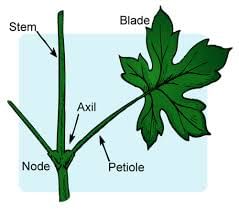 (a) Leaf blade
(a) Leaf blade
(b) Stomata
(c) Stalk
(d) Veins
Ans: (d)
Plant veins provide structure and support to plant leaves while also transporting water, nutrients, and energy to the rest of the plant.
(ii) Which of the following is responsible for the green color of the leaves?
(a) Midrib
(b) Leaf blade
(c) Stoma
(d) Chlorophyll
Ans: (d)
Chlorophyll gives plants their green color because it does not absorb the green wavelengths of white light. That particular light wavelength is reflected from the plant, so it appears green.
(iii) Which of the following stores the food in leaves?
(a) Cauliflower
(b) Legumes
(c) Spinach
(d) Broccoli
Ans: (c)
Those plants that can store food in their leaves are -Cabbage, Lettuce, spinach, etc. Some can store food in their stem-like sugar cane.
(iv) Which of the following is not required for photosynthesis?
(a) Water
(b) Sunlight
(c) Carbon dioxide
(d) Oxygen
Ans: (d)
Oxygen is not essential for the process of photosynthesis because oxygen is released in this process when plants utilize the raw materials i.e., carbon dioxide and water to produce sugars (glucose). Hence, it is not essential to carry out the process of photosynthesis.
(v) Venus flytrap has modified ______ to trap insects.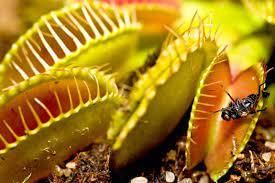 (a) stem
(a) stem
(b) roots
(c) flowers
(d) leaves
Ans: (d)
The Venus flytrap is a remarkable example of adaptive evolution. Its leaves are modified to form trap organs that have the unique ability to snap shut and trap a fly or other small creature that may accidentally touch one of the trigger hair cells located on the inner surface of the trap.
Q3: Fill in the blanks.
(i) The ______ is the flat part of a leaf.
Ans: Leaf blade
The flat part of a leaf is called the lamina (also known as the leaf blade). Most leaves have two main parts: (1) the blade and (2) the petiole, or leafstalk. The leaves of some kinds of plants also have a third part, called the stipules.
(ii) The ______ on the lower surface of leaves absorbs carbon dioxide from the air.
Ans: Stomata
The small pores present on the lower surface of the leaf are called stomata. Stomata absorb carbon dioxide from the air for photosynthesis. Stomata facilitate the exchange of gases and transpiration.
(iii) The extra food is stored in the form of ______ in plants.
Ans: Starch
The main way that food is stored in plants is as starch. Starch is manufactured in the green leaves of plants from the extra glucose produced during photosynthesis and is stored in plants as a reserve food supply.
(iv) The leaves in cactus are reduced to ______.
Ans: Spines
The leaves of a cactus have become spines to limit the loss of water through transpiration. The plant has to prevent water loss as there is very little rainfall in the areas of the cactus.
(v) The ______ has modified leaves in the form of a tubular pitcher-like structure with a lid.
Ans: Nepenthes
In Nepenthes (pitcher plant), the leaves are modified into pitchers to catch and digest the insects. The pitcher of Nepenthesls modified lamina. The apex of the leaf is modified into a lid which covers the opening of pitcher.
Q4: Match the following.
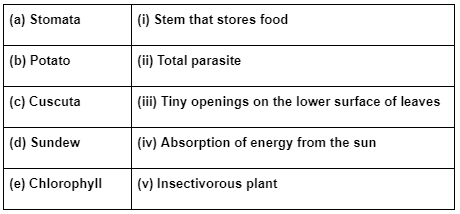 Ans: (a) Stomata - (iii) Tine opening on the lower surface of the leaf.
Ans: (a) Stomata - (iii) Tine opening on the lower surface of the leaf.
Stomata are minute openings found in the epidermis of leaves, stems, and other plant organs. Stomata allow gases such as carbon dioxide, water vapor, and oxygen to diffuse into and out of the internal tissues of the plant.
(b) Potato - (i) Stem that stores food
In potato and ginger plants, the food is stored in the underground parts. Ginger and potato are underground stems and the food is stored in them in the form of starch though it is prepared in the leaves.
(c) Cuscuta - (ii) total parasite
Cuscuta are stem parasites that naturally graft to their host plants to extract water and nutrients; multiple adjacent hosts are often parasitized by one or more Cuscuta plants simultaneously, forming connected plant clusters.
(d) Sundew - (v) insectivorous plant
Sundews are “flypaper” plants that trap prey in sticky hairs on their leaves. They make up one of the largest groups of carnivorous plants.
(e) Chlorophyll - (iv) Absorption of energy from the sun
Most plants contain a special colored chemical or pigment called chlorophyll that is used in photosynthesis. Chlorophyll is what absorbs the sun's energy and turns it into chemical energy.
Q5: True & False.
(i) The energy from the sun is absorbed by green leaves with the help of chlorophyll.
Ans: True
Most plants contain a special colored chemical or pigment called chlorophyll that is used in photosynthesis. Chlorophyll is what absorbs the sun's energy and turns it into chemical energy.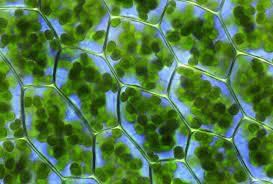
(ii) Animals depend directly or indirectly on plants for food.
Ans: True
Plants provide shelter and safety for animals. Plants also provide a place for animals to find other food, plants provide shade, help moderate the temperature, and protect animals from the wind. Plants and trees provide shelter to animals.
(iii) Insectivorous plants grow in soil rich in nutrients.
Ans: False
Insectivorous plants take their nutrition by feeding on insects and other organisms. They need to be adapted to grow in places where the soil is thin or poor in nutrients. They're found within nitrogen-deficient soil.
(iv) During photosynthesis, plants give out carbon dioxide through the stomata.
Ans: False
During photosynthesis carbon dioxide is not released instead it produces oxygen. There are three components required for photosynthesis to take place, they are light energy, water, and carbon dioxide.
(v) Croton plant appears red because it lacks chlorophyll.
Ans: False
The leaves of some plants like croton, have chlorophyll, but they appear dark red in colour. This is because the red pigment present in them hides the green colour of the chlorophyll.So such leaves can also make food by the process.
Q6: Answer the following questions in brief.
(i) Define photosynthesis.
Ans: Photosynthesis is the process in which green plants use sunlight to make their own food. Photosynthesis is necessary for life on Earth. Without it there would be no green plants, and without green plants, there would be no animals. Photosynthesis requires sunlight, chlorophyll, water, and carbon dioxide gas.
(ii) List any two plant parts that store food. Give two examples each.
Ans: Plants store their food in the form of starch in various parts of them. This starch can be stored in the leaves, stems, roots, flowers, fruits, and seeds of a plant. Those plants that can store food in their leaves are -Cabbage, Lettuce, spinach etc. Some can store food in their stem-like sugar cane.
(iii) Why do plants make their own food?
Ans: Plants are called producers because they make – or produce – their own food. Their roots take up water and minerals from the ground and their leaves absorb a gas called carbon dioxide (CO2) from the air. They convert these ingredients into food by using energy from sunlight. The foods are called glucose and starch.
(iv) What is midrib? What is its function?
Ans: The Midrib is the central, thicker, linear structure, that runs from the plant thallus or lamina, and the Midrib is usually seen in the true leaves, as the vein runs from the leaf base to the apex, its main functions are to provide support and it is a translocative vessel.
(v) What are insectivorous plants? Give two examples.
Ans: Insectivorous means insect-eating, these plants derive most of their nutrition from the insects that they trap and consume. That is why they trap and digest insects to absorb nutrients. Venus flytrap, pitcher plant, and cobra lily are some of the insectivorous plants' names. They are often called Carnivorous plants.
Q7: Answer the following questions in detail.
(i) What are the three things for which animals depend on plants? What are the three things for which plants depend on animals?
Ans: To survive, animals need air, water, food, and shelter. Plants provide shelter and safety for animals. Plants also provide a place for animals to find other food, plants provide shade, help moderate the temperature, and protect animals from the wind. Plants and trees provide shelter to animals. Whereas When animals die they decompose and become natural fertilizer plants. Plants depend on animals for nutrients, pollination, and seed dispersal.
(ii) What happens during photosynthesis?
Ans: Photosynthesis is the process in which green plants use sunlight to make their own food. Photosynthesis is necessary for life on Earth. Without it there would be no green plants, and without green plants, there would be no animals. Photosynthesis requires sunlight, chlorophyll, water, and carbon dioxide gas.
Q8: Label the following parts of a leaf.
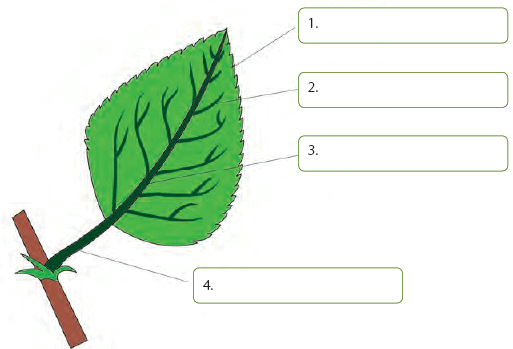
Ans: 1. Apex
2. Margin
3. Midrib
4. Petiole
|
48 videos|156 docs|34 tests
|
FAQs on Class 4 Science - How Do Plants Make Their Food - CBSE Worksheets Solutions - 1
| 1. How do plants make their food? |  |
| 2. What is photosynthesis? |  |
| 3. What is the role of chlorophyll in photosynthesis? |  |
| 4. Why is sunlight important for photosynthesis? |  |
| 5. What are the raw materials required for photosynthesis? |  |
















